Cut across
Lucienne Bestall
Arranged alongside one another, four artworks from A4's Archive offer reflections on dividing lines. – June 7, 2024
Begin with bare equivalences –
Four works: all monotone, all cleaved by a line.

First impulse –
A landscape by David Goldblatt divided, as the genre demands, by the horizon into complementary halves.

(Being unframed, the photograph cannot be included. It remains present as a note tacked to the wall, beyond the limits of the blue tape.)
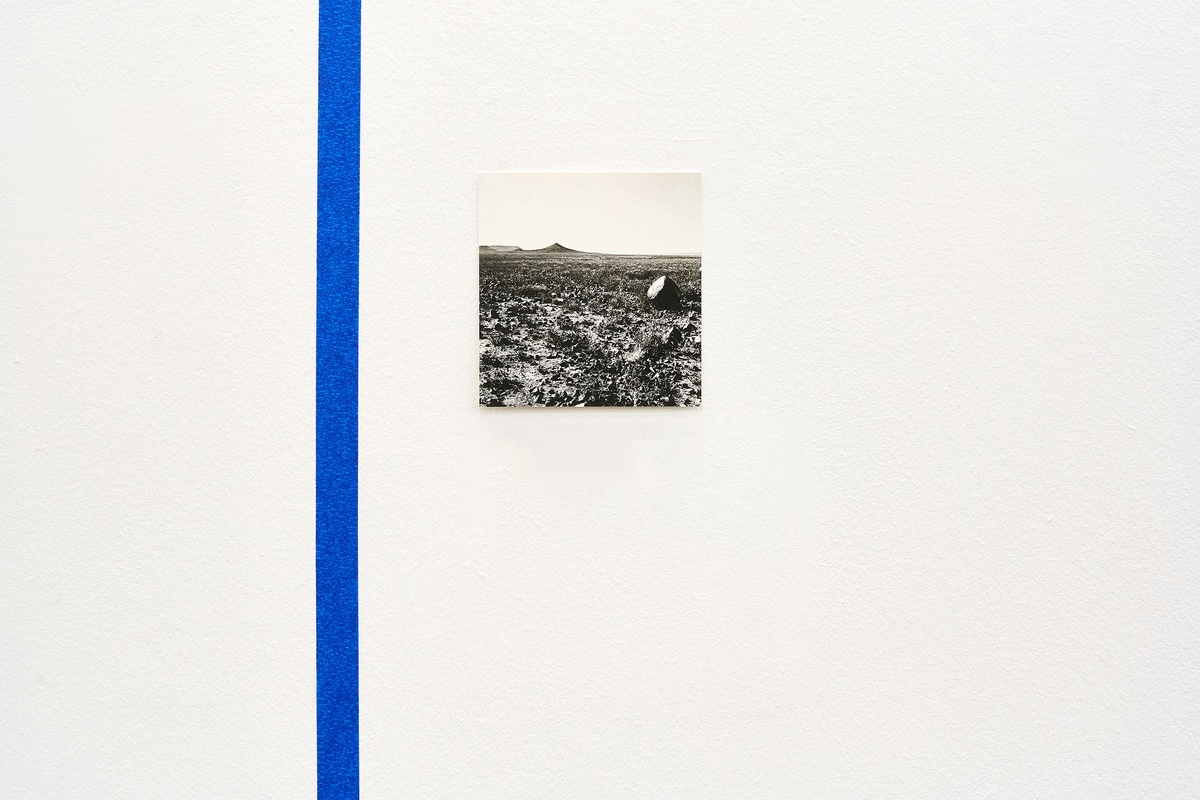
First artwork –
Almost landscape, almost portrait. A photograph halved by eclipsing white. The chromatic composition of Sabelo Mlangeni’s image echoes Goldblatt’s, yet the line, rather than describing the topology of a given place, serves only to obscure it.
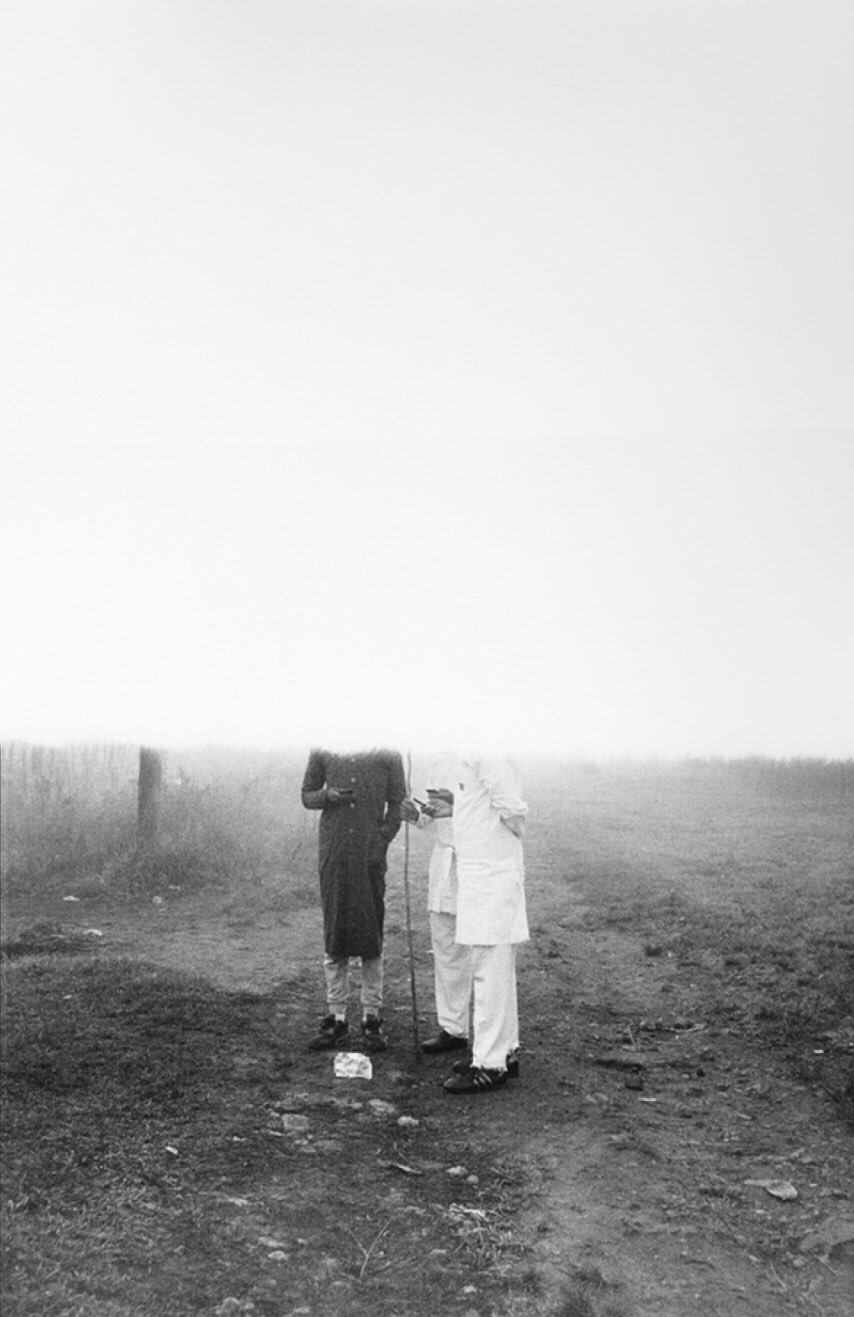
Similarly obscured –
The material nature of Kyle Morland’s work, first mistaken as a photograph by Thembinkosi Hlatshwayo, as an indexical image of a worn surface.
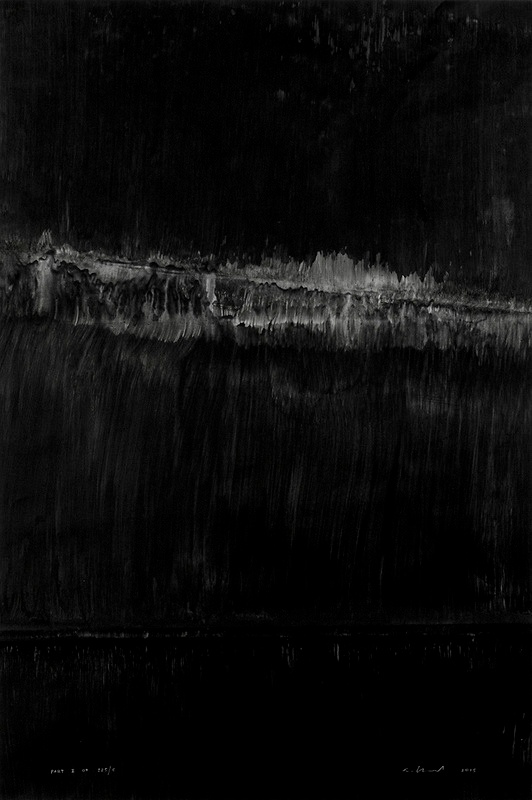
Another impulse –
To include such a photograph; to follow the error.

(Also unframed, this photograph joins Goldblatt’s on the far side of the blue tape.)
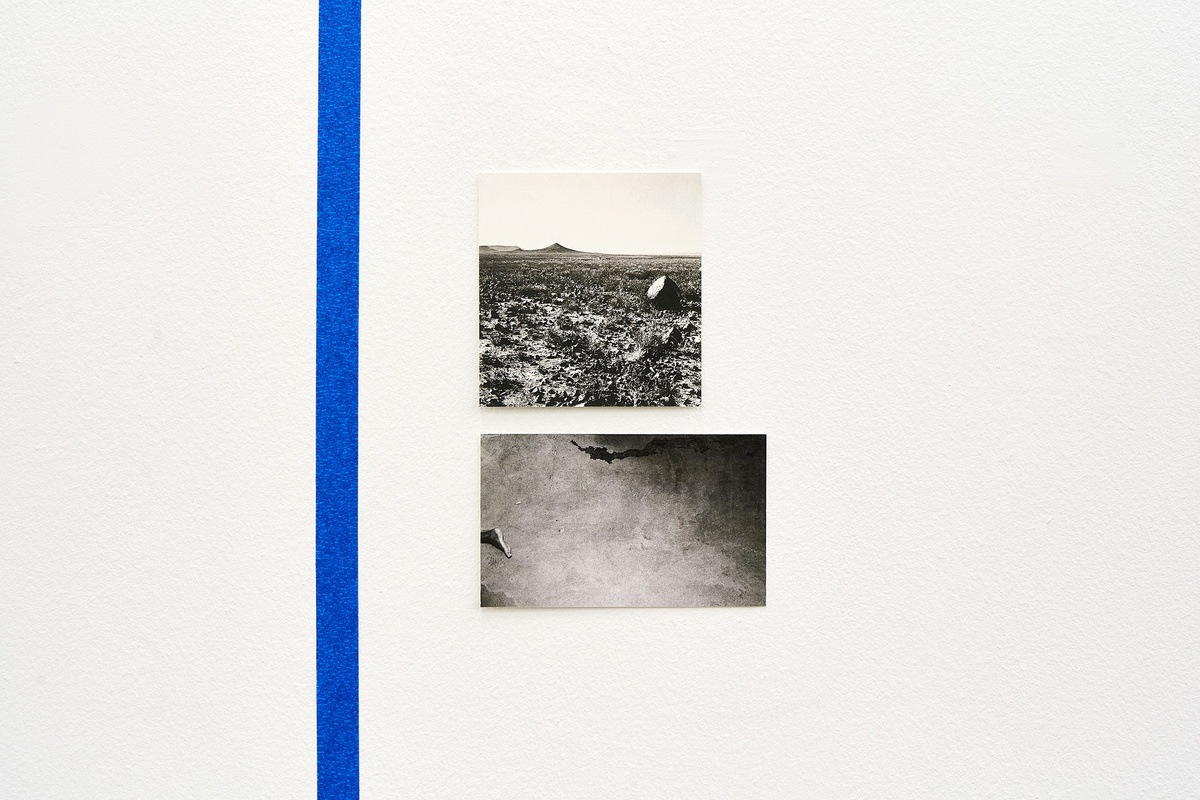
In truth –
Morland's work is a rubbing made of the unseen facets of a steel sculpture; a notation of what is otherwise invisible. The seam that runs across the darkness describes the intersections of different planes.
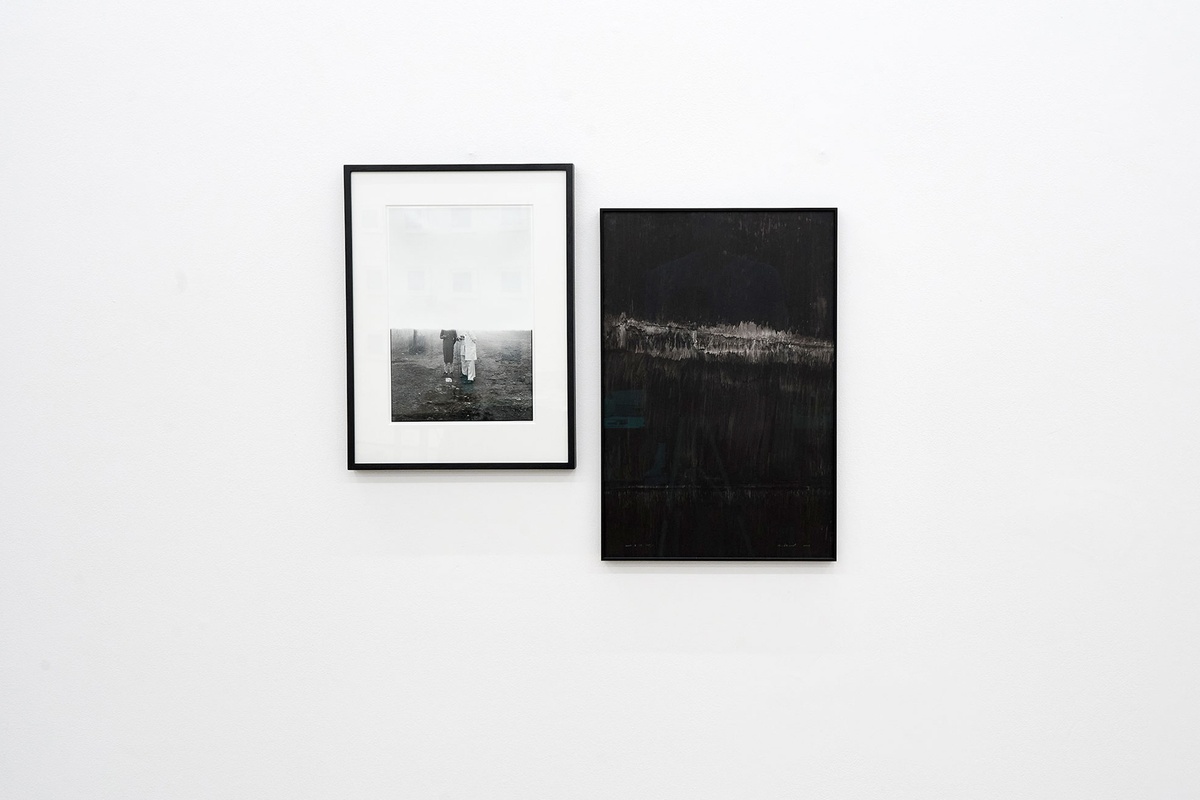
Then –
Another unseen space, twice divided by shadows. This, too, by Goldblatt. Like Hlatshwayo's photograph, emphasis is given to the texture of time as it is transcribed on surfaces. The chromatic composition inverts that of the landscape, further resisting easy simile with its two dividing lines.

Lastly –
A fabric assemblage by Gerda Scheepers recalls Mlangeni’s image in composition and concealment.
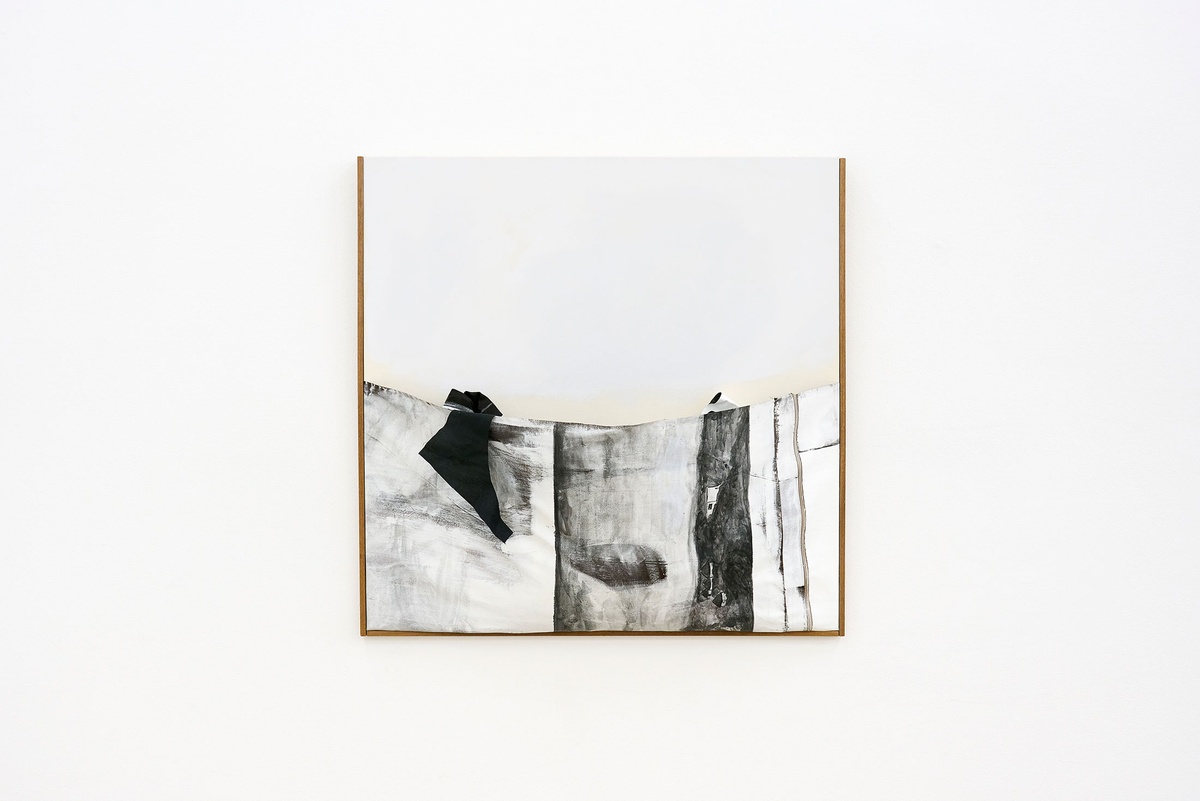
In the lower half of the work, which appears all incidental mark-making and abstraction, is an impression of a landscape arranged vertically.
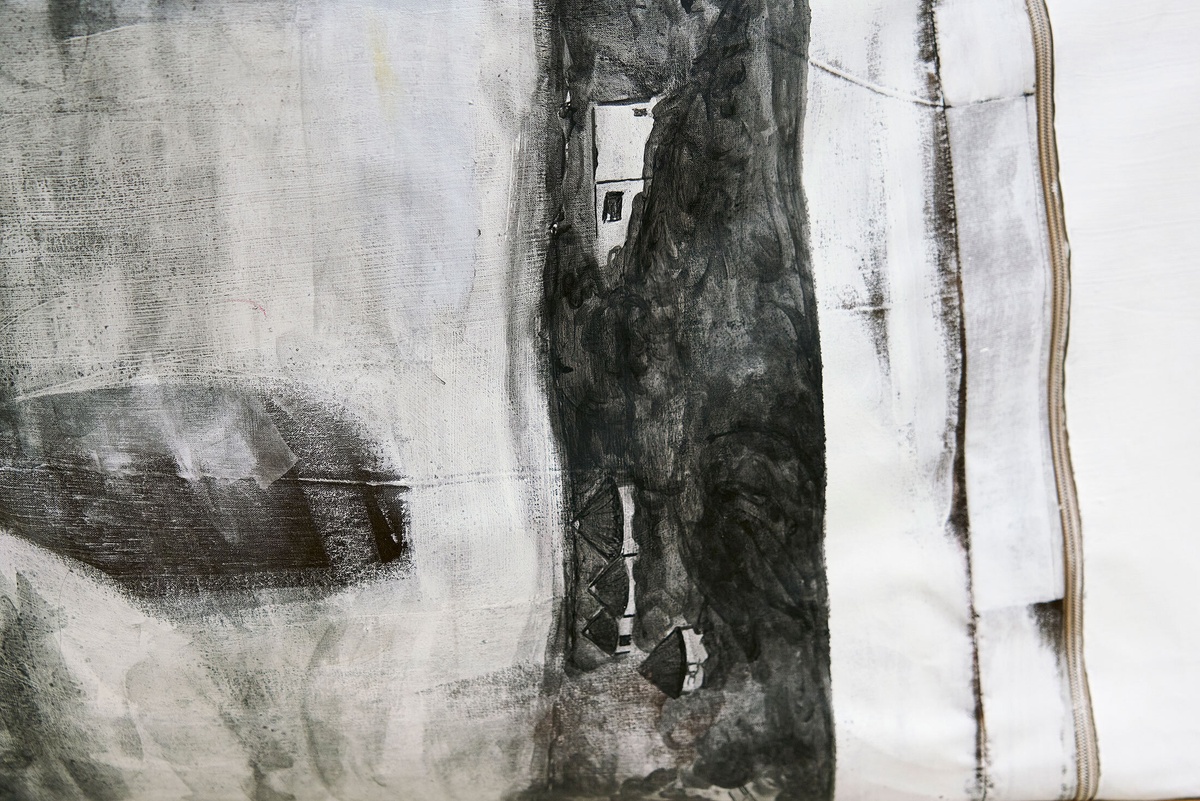
The title of the work, Pondoland Pocket, ties the image to a place, inviting comparison with Goldblatt’s photograph of the Karoo.
